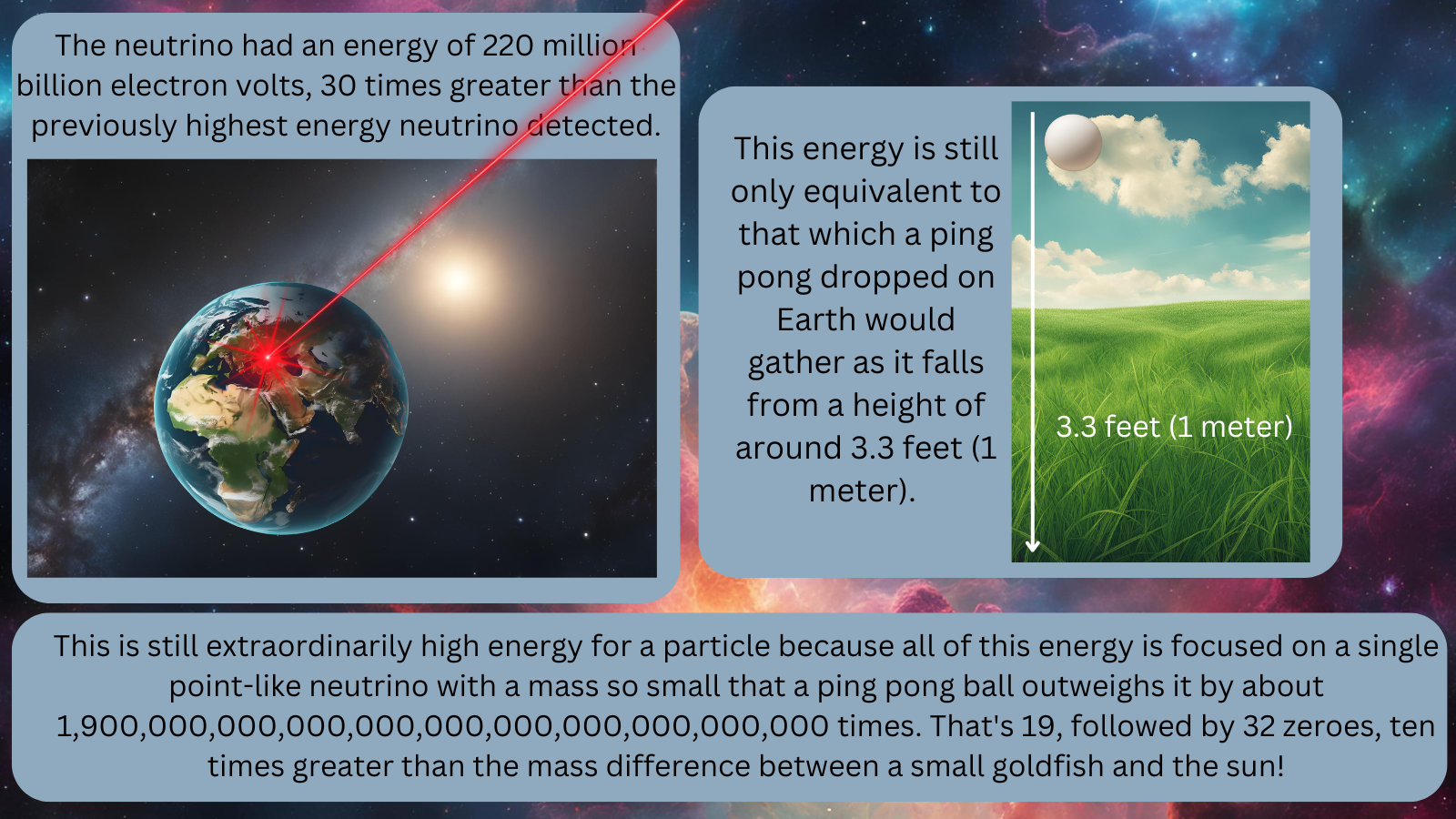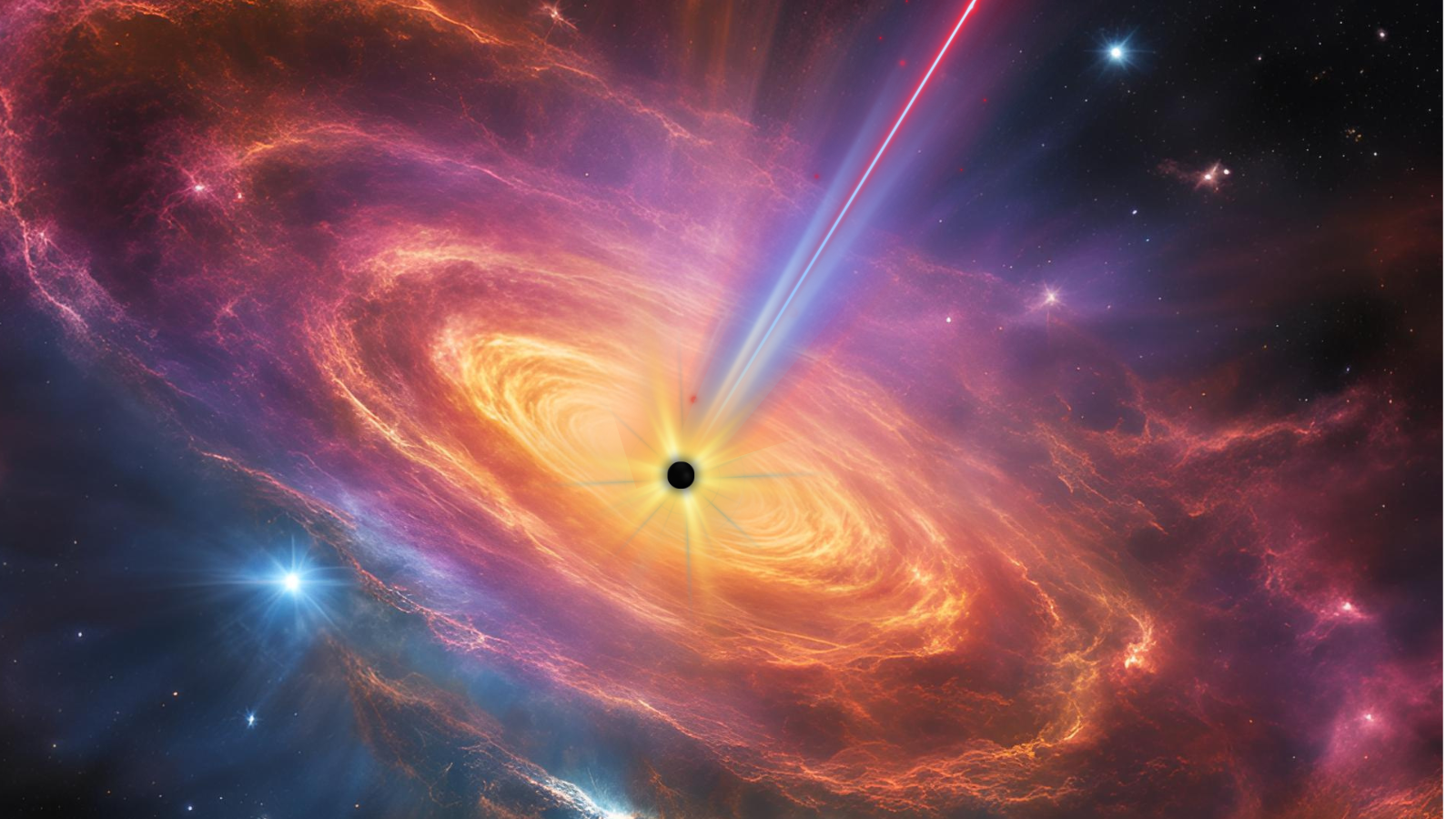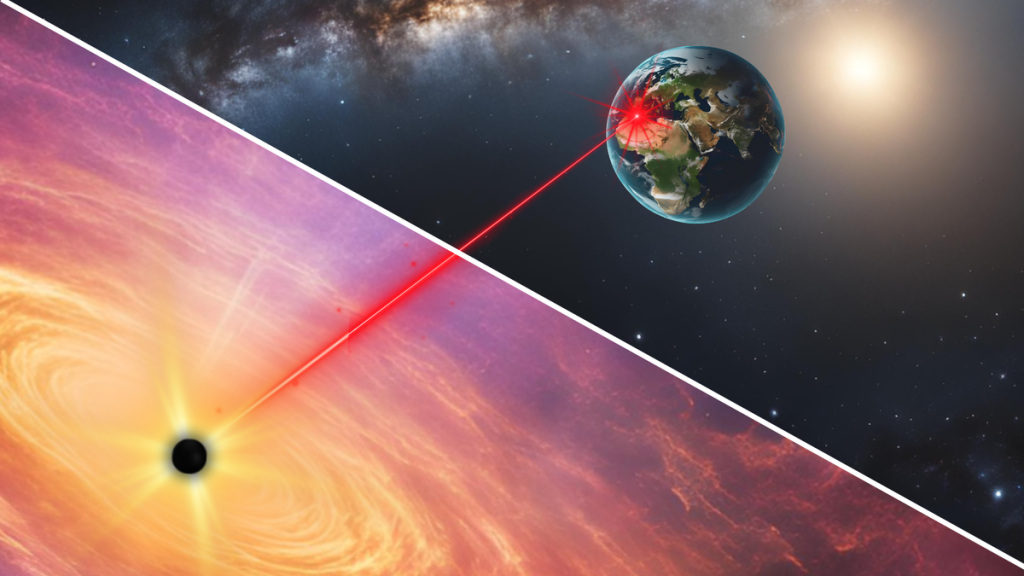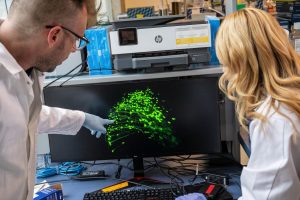Scientists have detected the highest-energy “ghost particle” ever seen. The particle, a type of neutrino, arrived at Earth at nearly the speed of light and with 30 times the energy of the previous most energetic neutrino ever glimpsed. This is the first solid evidence that neutrinos with such high energies can be produced in the universe.
This particle’s high-energy nature indicates that the neutrino originates from outside the Milky Way, and though the ghost particle’s source is yet to be determined, the team has 12 suspects in mind. The suspects are all “blazars,” or the energetic cores of “active galactic nuclei” (AGN) that are powered by feeding supermassive black holes. Blazars are types of quasars that stand out because the beams of high-energy particles and light they blast out are pointed directly at Earth.
Another possibility, however, is that the high-energy neutrino was created when an ultramassive cosmic ray particle slammed into particles of light, or “photons,” left in the universe after some event that occurred just after the Big Bang.
The neutrino was spotted via the detection of a single muon by the Kilometer Cubic Neutrino Telescope (KM3NeT), located 11,300 feet (3,450 meters) beneath the waves of the Mediterranean Sea, on Feb. 13, 2023. During the event, designated KM3-230213A, the muon crossed the entire KM3NeT detector and lit up one-third of the deep sea instrument’s thousands of active sensors.
“This neutrino is very likely of cosmic origin, and its energy is such that it’s in a completely unexplored region of energy,” Paschal Coyle of the French National Centre for Scientific Research said in a press conference held on Tuesday (Feb. 11). “History shows us that whenever you do open a new ‘energy window,’ you never really know what you’re going to find. It’s completely unexplored.
“It’s finding unexpected things which drive many of us,” Coyle added.
Catching high energy cosmic ghosts
Neutrinos are often nicknamed “ghost particles” because they lack a charge and have a pretty non-existent mass. In fact, about 100 trillion neutrinos can pass through your body every second without you noticing a thing.
Thus, though neutrinos represent the second most abundant particle in the universe after particles of light, photons, they are notoriously difficult to detect and require detectors to go deep underground, or, in this case, deep under the sea.
Breaking space news, the latest updates on rocket launches, skywatching events and more!
“Neutrinos are one of the most mysterious of elementary particles,” Rosa Coniglione, KM3NeT team member from the Istituto Nazionale di Fisica Nucleare in Italy, said during the press conference. “They have no electric charge, almost no mass, and interact only weakly with matter. They are special cosmic messengers, bringing us unique information on the mechanisms involved in the most energetic phenomena and allowing us to explore the farthest reaches of the universe.”
Even though the KM3NeT detected a flash of light from an electron-like muon — not a neutrino — it was the qualities of this elementary particle that indicated it had been created when an unusually high-energy neutrino struck another particle.
“There are many muons going through the detector coming from above, produced in the Earth’s atmosphere, and they are not interesting. We detected roughly 110 million of them in 2023,” the experiment’s physics coordinator at the time of the detection, Aart Heijboer of Nikhef National Institute for Subatomic Physics in the Netherlands, said at the press conference. “It turns out that this particle was [oriented] horizontally. To produce a horizontal muon, there must have been a neutrino because these are the only particles that can traverse the required amount of material, 87 miles [140 kilometers] of rock and water to produce this horizontal particle in the detector.”

The team was able to determine the energy of the neutrino from the amount of light registered by the detector. They found that energy was 220 million billion electron volts, which Heijboer explained is 30,000 times the energy that Earth’s largest particle accelerator, the Large Hadron Collider (LHC), is capable of achieving.
For context, Coyle explained that to accelerate a particle to such energies, the LHC would have to be expanded from its current length of 17 miles (27 kilometers) to around 25,000 miles (40,000 kilometers). That’s the circumference of the Earth.
“It would require having a global LHC accelerator all around the world to reach such an energy,” Coyle said.
So, what kind of natural cosmic particle accelerator could have launched a neutrino with such energy? Though the researchers don’t yet have a conclusive answer, they suspect that the solution lies at the hearts of AGNs.
Supermassive black holes as cosmic particle accelerators
The high-energy universe is flooded with a variety of violent and powerful events, from the explosive supernova deaths of massive stars to gamma-ray bursts, which are brief explosions of high-energy light. Though they often last for fractions of a second, gamma-ray bursts can pump out more energy than the sun will radiate in its entire lifetime.
All of these events could act as particle accelerators, but the prime suspects in this case are supermassive black holes with masses millions or billions of times that of the sun. When these supermassive black holes are surrounded by vast amounts of matter in AGNs, they are known as “quasars,” powering vast jets of matter that can stretch for hundreds of light-years. When these jets point right at us, the quasar is referred to as a “blazar.”
The jets emitted in blazar flare events are composed of high-energy particles known as cosmic rays that can extend well beyond the limits of the galaxies housing the black hole that created them. These jets also consist of electromagnetic radiation ranging from low-energy radio waves to extreme high-energy gamma rays. When such particles strike others in the galaxy of origin, they send showers of high-energy neutrinos raining through the cosmos.
Coniglione explained during the press conference that, by measuring the direction of the particle, the researchers were able to trace it back to the border of the Milky Way.
With no sources to explain the high-energy ghost particle traceable in our galaxy, the team found 12 interesting sources: all blazars beyond the boundaries of the Milky Way. One of those 12 could be the origin point of this newly discovered particle.
There is another suspect, however.

The researchers think this high-energy neutrino could have been generated when an ultra-high energy cosmic ray, most likely a proton, struck a photon in the cosmic microwave background (CMB). This cosmic fossil represents the first light capable of freely traveling through the cosmos after electrons bonded with protons, allowing photons to travel freely without being endlessly scattered.
An interaction between a cosmic ray and the CMB would have created a shower of high-energy neutrinos. If that is the case, this would be the first detection of a so-called “cosmogenic neutrino.” Scientists are sure such neutrinos must exist, even though they have remained frustratingly elusive.
The potential detection of a cosmogenic neutrino is exciting because these high-energy particles could open up a new form of astronomy. This would bolster the unification of “traditional astronomy” that taps into electromagnetic radiation and gravitational wave astronomy that focuses on tiny ripples in the fabric of spacetime. The third arm of these innovative ways of investigating the cosmos is referred to as multi-messenger astronomy, and neutrino-based versions of this would expand it into new high-energy domains.
At the moment, with one single detection, the team can’t distinguish whether this high-energy neutrino came from a cosmic particle accelerator like a blazar or if it originated in a cosmic ray/CMB collision.
However, the fact that KM3NeT made this first-of-its-kind historic detection while still under construction should offer some confidence that this cosmic mystery could soon be solved.
“In the next year, KM3NeT will deliver more and more data with improved angular resolution,” Coniglione said. “In the near future, we will have a more refined pointing of this event and probably a more firm conclusion on the origin of this event.”
The team’s research was published on Wednesday (Feb. 12) in the journal Nature.







